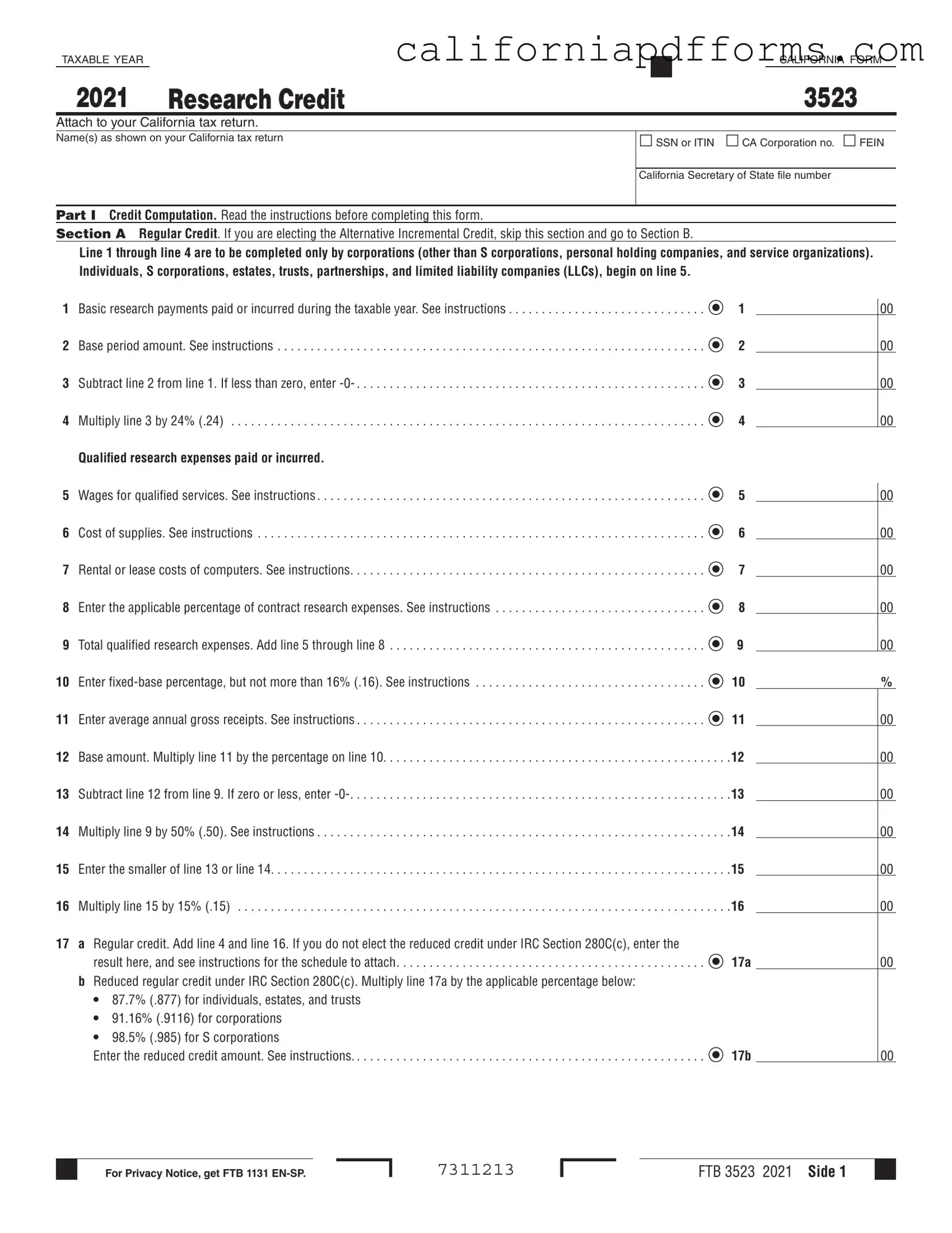The California Form 3523 is a tax form used to claim the Research Credit for businesses engaged in qualified research activities. It is specifically designed for California taxpayers, including corporations, individuals, and various business entities, to report their research expenses and calculate the credit they may be eligible for on their state tax returns.
Form 3523 should be filed by any taxpayer who has incurred qualified research expenses in California during the taxable year. This includes corporations (excluding S corporations, personal holding companies, and service organizations), individuals, estates, trusts, partnerships, and limited liability companies (LLCs). Each entity must follow the appropriate section of the form based on its classification.
What are qualified research expenses?
Qualified research expenses (QREs) include costs directly related to research activities. These expenses can encompass:
-
Wages for employees engaged in qualified research services
-
Costs of supplies used in research
-
Rental or lease costs for computers used in research
-
Contract research expenses
Taxpayers must carefully track and document these expenses to substantiate their claims for the credit.
Form 3523 consists of two primary sections for credit computation:
-
Regular Credit:
This section is for taxpayers who are not electing the Alternative Incremental Credit. Corporations complete lines 1-4, while individuals and other entities start from line 5.
-
Alternative Incremental Credit:
This section is for those who choose the Alternative Incremental Credit option. It begins at line 18 for corporations and line 22 for individuals and other entities.
How is the credit amount calculated?
The credit amount is calculated based on the qualified research expenses incurred during the taxable year. For the Regular Credit, taxpayers multiply the difference between their QREs and a base amount by a specified percentage (24% for basic research payments). In the Alternative Incremental Credit section, the calculation follows a different method that involves various multipliers based on the taxpayer's gross receipts and other factors.
What is the significance of IRC Section 280C(c)?
IRC Section 280C(c) allows taxpayers to elect a reduced credit amount if they have received federal grants or other assistance for their research activities. This section provides specific percentages for reducing the credit based on the type of entity, which can affect the overall amount claimed on the tax return.
Can credits be carried over to future years?
Yes, any unused research credits can be carried over to future tax years. Taxpayers should keep track of their credit carryovers, as they can use these amounts to offset future tax liabilities. Form 3523 includes a section for calculating the available carryover amount for future use.
Instructions for completing Form 3523 are typically included with the form itself or can be found on the California Franchise Tax Board's website. It is essential to read the instructions thoroughly to ensure accurate completion and to maximize the potential credit claimed.
